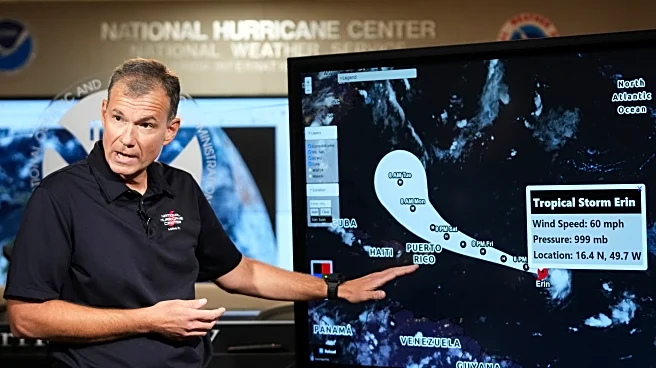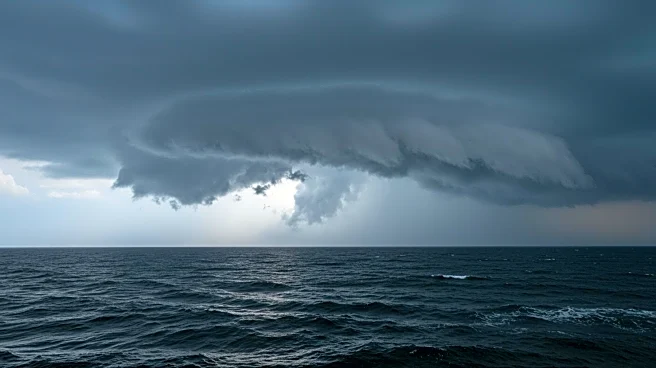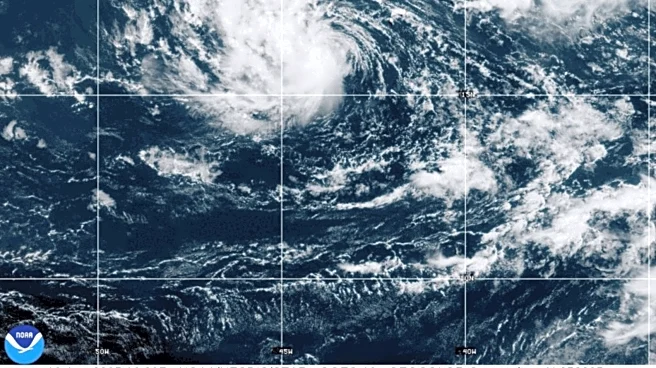What's Happening?
Hurricane Erin has become the first hurricane of the 2025 Atlantic season, classified as a Category 1 storm with winds up to 75 mph. Tropical storm watches are in effect for the Northern Leeward Islands, including St. Martin and Barbuda, with Erin expected to pass near or north of these islands. The storm is anticipated to intensify into a major hurricane by Sunday morning, potentially bringing heavy rain and gusty winds to Puerto Rico and the U.S. Virgin Islands. Erin's path is projected to remain east of the Bahamas, with meteorological models suggesting it will stay offshore from the U.S. East Coast.
Why It's Important?
Hurricane Erin's development underscores the National Hurricane Center's prediction of an above-normal hurricane season. The storm poses risks of strong waves and rip currents along the U.S. East Coast, which could lead to coastal erosion, particularly in North Carolina's Outer Banks. The potential for flash flooding and mudslides in Puerto Rico and the Virgin Islands highlights the need for preparedness in these regions. Erin's trajectory and intensity could impact emergency response and infrastructure resilience in affected areas.
What's Next?
As Erin moves northwest, it is expected to remain offshore from the U.S., but large waves and rip currents could affect the East Coast from August 20 to 27. A cold front is predicted to keep Erin out to sea, while bringing cooler temperatures to the Northeast. The National Hurricane Center continues to monitor the storm's path and potential impacts, advising caution for coastal communities. The Atlantic hurricane season remains active, with August, September, and October being the most intense months.
Beyond the Headlines
The threat of coastal erosion and property damage from hurricanes like Erin highlights the importance of sustainable coastal management practices. The economic implications extend to tourism and real estate, with potential long-term impacts on coastal communities. The increasing intensity of hurricanes due to climate change necessitates advancements in forecasting and disaster preparedness.












